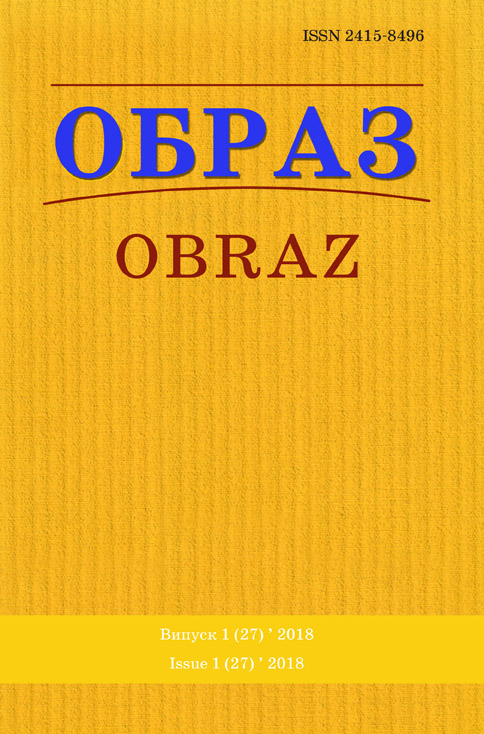Abstract
Why do this study. The article deals with the history of factcheking, the methods of manipulation, tools for verification of information. Verifying the data and facts for authenticity, accuracy, completeness, propaganda and manipulation helps to clear the media markets from lie, gives an opportunity to increase social media literacy, to educate people in critical thinking.
The purpose of the article is to characterize the current state of journalism in the field of checking the authenticity of facts and data, to indicate the signs indicating the need for facetchinking in Ukraine. The analysis of the content of the sites made it possible to clarify the wording of the concept of «factcheking» and «verification» and to give the main features indicating the false data.The attention is focused on the problem of fakcheking in Ukraine, the methods of functioning of the four Ukrainian Factochemistry Portal «Word and Business», VoxUkraine, FactCheck-Ukraine, Stopfake.org. In article demonstrate the indications of false information. The analysis of the content of the sites made it possible to clarify the wording of the concept of «factcheking» and «verification» and indicate the main features fer the verification of data. The basic principles of the work of the factcheking sites are the strengthening of media literacy of the audience and the struggle for a clear separation of journalism facts and propaganda.
Research methods. The main methods used in the article are content analysis and synthesis, as well as scientific modeling. The author analyzed the websites and portals of media organizations, which are based on fakcheking, structured and synthesized the material presented there, and made generalizations regarding the specifics of data and facts verification.
Results. The research materials allowed to develop certain signs of falsehood of information and manipulation of facts: excessive emotionality; exaggeration; concealment of information; substitution of concepts; overstatement or understatement of evaluation; incorrect data comparison; availability of quotation without context; obsessive positive-negative; appeal only to the past; reference only to data from Wikipedia; avoiding discussion of awkward topics; the position and hidden intentions of the author of the material; the correct statistics with the wrong interpretation; reputation of information source; the source’s belonging to specific people with their political preferences.
References
1. Black, К. (2016) «The 16 rules of journalistic investigation from an expert of the London Bureau of Investigative Journalism», MediaSapiens, April 15, available at: http://osvita. mediasapiens.ua/ethics/standards/16_pravil_zhurnalistskogo_rozsliduvannya_vid_eksperta_ londonskogo_byuro_rozsliduvalnoi_zhurnalistiki (access January 21, 2018).
2. Ivanov, V. (2015) «Requirements to the work with facts and sources of information in the mass media», Іnformatsіine suspіl’stvo. – issue 22. – PP. 17–20.
3. Ryabichev, V. (2015) «Content Verification in Social Media», Aktual’nі pitannya masovoї komunіkatsії. – № 18. – PP. 44–61.
4. Sysina, L. (2017) Traditional and innovative resources for the verification of information, use there in the information and analytical departmant of libraries», Naukovі pratsі Natsіonal’noї bіblіoteki Ukraїni іmenі V. І. Vernads’kogo, issue. 46, PP. 387-409.
5. Yaschenko, L. (2014) Information snd analytical activity: a summary of lectures [Іnformacіjno-analіtichna dіjal’nіst’ : konspekt lekcіj], ONPU, Odesa, available at: http://opu. ua/upload/files/hsf/dsia/KL_IAD.pdf (access date: 21.01.2018)/
6. A Project of The Annenberg Public Policy Center, available at: https://www.factcheck.org/ our-process (access January 21, 2018).
7. Adair, B. and Holan, A.D. The Principles of PolitiFact, PunditFact and the Truth-OMeter, available at: http://www.politifact.com/truth-o-meter/article/2013/nov/01/principlespolitifact-punditfact-and-truth-o-meter (access January 21, 2018).
8. Chokshisept, N. (2017) How to Fight ‘Fake News’ (Warning: It Isn’t Easy) // The New York Times, September 18, available at: https://www.nytimes.com/2017/09/18/business/media/ fight-fake-news.html (access January 21, 2018).
9. Duke Reporters’ Lab., available at: https://reporterslab.org/fact-checking Our Process/ Factcheck.org (access January 21, 2018).
10. Guide: The five-step fact-check (2015), available at: // https://africacheck.org/factsheets/ guide-the-five-step-fact-check (access January 21, 2018).
11. Holan, A. D. (2017) Lie of the Year Readers’ Poll results // politifact. – http://www. politifact.com/truth-o-meter/article/2017/dec/12/2017-lie-year-readers-poll-results (access January 21, 2018).
12. Lyons, Т. (2017) News Feed FYI: Replacing Disputed Flags with Related Articles, December 20, available at: https://newsroom.fb.com/news/2017/12/news-feed-fyi-updates-in-our-fightagainst-misinformation (access January 21, 2018).
13. Mantzarlis, А. (2016) 366 links to understand fact-checking in 2016, December 21, available at: https://www.poynter.org/news/366-links-understand-fact-checking-2016 (access January 21, 2018).
14. Menczer, F. (2016) «Misinformation on social media: Can technology save us?», Тhe Сonversation, Nivember 28, available at: https://theconversation.com/misinformation-onsocial-media-can-technologysave-us-69264 (access January 21, 2018).
15. Mullin, В. and Mantzarlis, А. (2016) Facebook has a plan to fight fake news. Here’s where we come in, December 15, available at: https://www.poynter.org/news/facebook-has-plan-fightfake-news-heres-where-we-come (access January 21, 2018).
16. Newman, N. (2017) Journalism, Media and Technology Trends and Predictions 2017, available at: http://reutersinstitute.politics.ox.ac.uk /publication/journalism+media+and+tec hnology+trends+and+predictions+2017 (access January 21, 2018).
17. Nyhan, B. and Reifler, J. (2014) «Effect of Fact-Checking on Elites: A Field Experiment on U.S. State Legislators», American Journal of Political Science. 59 (3): 628–40. doi:10.1111/ ajps.12162. ISSN 1540-5907. – October 27, available at: http://onlinelibrary.wiley.com/ doi/10.1111/ajps.12162/abstract (access January 21, 2018).
18. VoxUkraine – more than the best analyst about Ukraine, available at: ht-ps://voxukraine. org/uk/about-us/ (access January 21, 2018).
19. Wood, T. and Porter, E. (2016) «The Elusive Backfire Effect: Mass Attitudes’ Steadfast Factual Adherence», USA, Rochester, NY: Social Science Research Network. August 5, available at: https://papers.ssrn.com/sol3/papers.cfm?abstract_id=2819073 (access January 21, 2018).

This work is licensed under a Creative Commons Attribution 4.0 International License.

